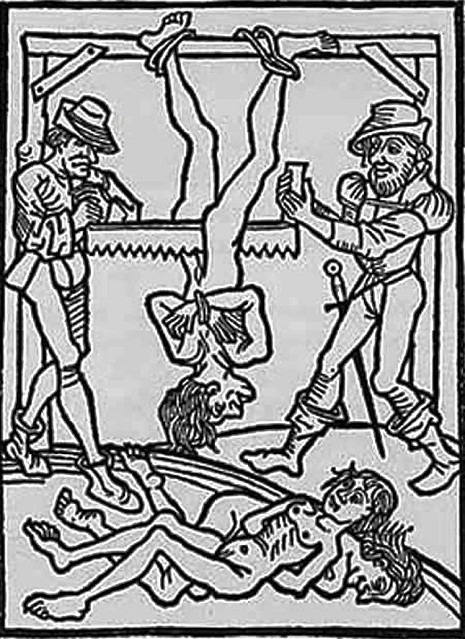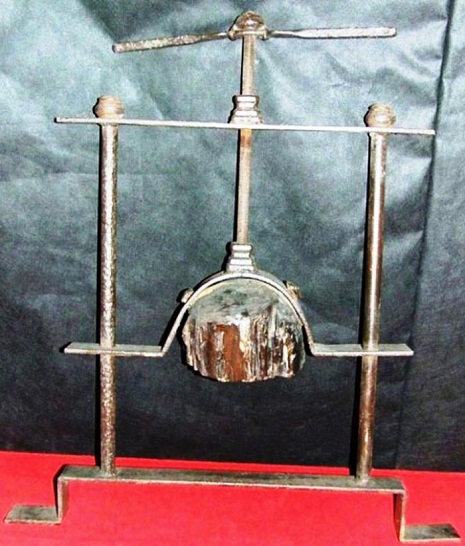
Before the saw was given its perfunctory role to slice through wood and thick material, it was used to slice through humans for torture or execution. The victim would be held upside down, allowing the blood to rush to their head, and then the torturer would slowly start slicing them between their legs.
With the blood contained in the head, the victim would remain conscious throughout most of the slicing, often only passing out or dying when the saw hit their mid-section.

Medieval Torture Devices: Breast Ripper Or The Spider

For those women who were accused or adultery, abortion or any other crime, they were subjected to the painful torture of the breast ripper or the spider. As the name suggests, the claw-like device, which ended in spikes, was heated and then used to rip off or shred a woman’s breasts. The spider was a variant, attached to a wall instead of clamped onto a woman’s breast by a torturer.

The Ultimate Torture Devices: The Rack

Probably the most commonly know torture device from the Middle Ages, the rack was a wooden platform, with rollers at both ends. The victim’s hands and feet were tied to each end and the rollers would be turned, stretching the victim’s body to uncomfortable lengths.

Painful Torture Devices: Knee Splitter

Used frequently during the Spanish Inquisition, the knee splitter, naturally, was used to split a victims knee. The device was built from two spiked wood blocks with a screw at the back, and was clamped on the front and back of the knee. One turn of the screw and, hey presto, a knee was easily, and painfully, crippled. It was also used on other parts of the body.
Middle Age Torture Devices: The Head Crusher

Extremely inventive with names, the head crusher (much like the breast ripper and knee splitter) did exactly what it was called. The chin sat on the bottom rung, the head under the cap, and the turning of the screws would result in a very disgusting death – brains seeping out of the popped eye sockets, crushed teeth and bones, and mutilated remains.

The Wheel

Most commonly used in Germany during the Middle Ages, the wheel was a favorite form of execution. The victim was tied to the wheel on the ground and wooden crosspieces were placed under each major joint (wrist, ankles, hips, shoulders, knees).
After the pleasantries were observed, the torturer would start hammering the crosspieces with a heavy, iron-enhanced wheel. Following the severe bashing, the victim’s limbs were braided into the spokes of the wheels and displayed to the general public until the victim died.

The Wooden Horse

The wooden horse, the wooden pony or the Spanish donkey, is the name given to an extremely painful torture device used throughout history, particularly during the American colonial period and medieval times. There are three variations of the device, however the principle and design is the same.
The wooden device is triangular in shape and angled, often sharpened at the top. The victim is forced to straddle the triangular ‘horse’, placing their full body weight on their vulva, with additional weights added to their ankles to keep them from falling off. Needless to say, the additional weight would pull the victim’s entire body down severely injuring their crotch, and sometimes even slicing it in half — making it one of the most brutal torture devices ever.
The Judas Cradle

Similar to the wooden horse, the Judas cradle was a pyramid shaped and sharpened device, on which a victim was lowered via ropes. As the victim was lowered, the device would slowly tear open their anus, vulva or scrotum. Though the device is often attributed to the Spanish Inquisition, there is evidence that it existed before this time as part of carnival sideshows.

Videos On Medieval Torture Devices















































